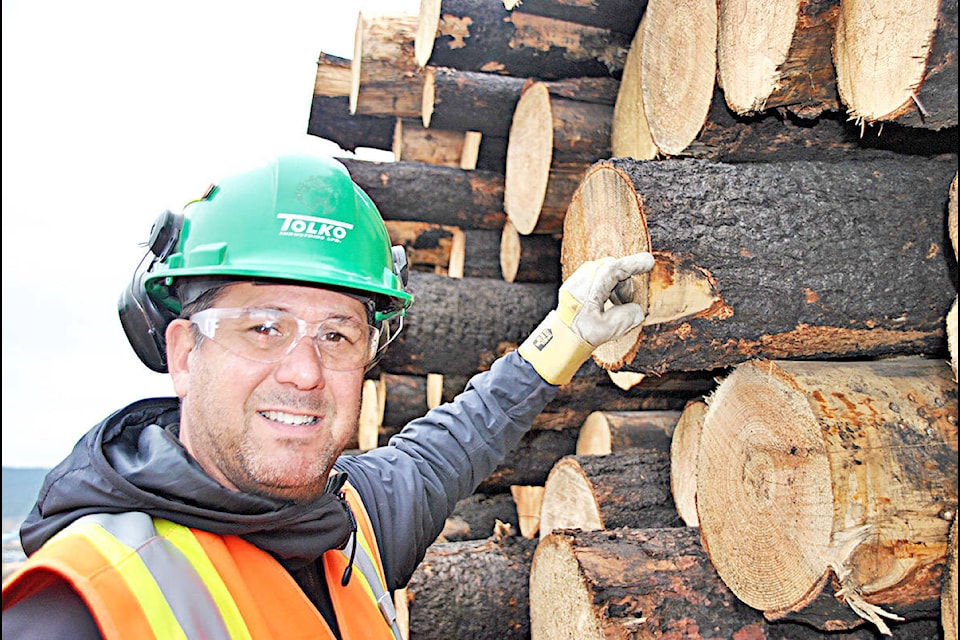By Janice LOCKYER
Special to the Tribune/Advisor
As forest fires tore through the Cariboo this summer, and the evacuation order was issued, the top priority for everyone was to protect people, their homes and the assets of the community. The same was true for Tolko Industries Ltd.
“With two operations in Williams Lake, our main concern was making sure our employees were safely evacuated and our mills were well protected,” said General Manager, Cariboo Lumber, Randy Chadney.
“We had great support from our Tolko team, particularly our Woodlands team, the community and the various wildfire professionals here in town and in the forests. Thanks to the efforts of all, we were able to make sure people had their livelihood to come home to when the order was lifted.”
Now, as the worst forest fire season on record in B.C. slowly comes to an end and the community tries to return to normal, Tolko is taking stock and looking to the future.
Chadney said they are pleased with the overall progress of the mills. This week operations in Williams Lake are running two shifts with an eye to adding a third as soon as log inventories stabilize.
However, the fires have had an impact and the company must now assess how timber loss will impact the future.
“Fires are still active in areas which makes it difficult to confirm total amounts of timber lost, but we know it’s significant,” said Tom Hoffman, manager external and stakeholder relations. “For example, in the Quesnel area we believe we have lost about a year of planned supply at this point.”
And while that sounds like a lot, Hoffman says all is not lost and there is still potential in the burnt timber that remains, particularly in the Douglas-fir forests.
“We do have the capacity to salvage the viable timber that is left,” said Hoffman. “We’re working with the Ministry of Forests, Lands, Natural Resource Operations and Rural Development to secure the permits and approvals needed to proceed. We believe government sees the benefit of allowing salvage opportunities not only from an economic perspective, but also from a sustainability and community protection perspective. However, we must move as quickly as we can.”
The sense of urgency is real. Salvage timber is only viable for a year or two, so if the timber is to be harvested, it must be soon.
The fires also put stress on lighter burned Douglas-fir leading to an increase in Douglas-fir Bark Beetle -a damaging pest that people of the area know well.
“We anticipate salvage operations could continue for two to four years,” said Hoffman. “However, the clock is ticking on affected timber. If we miss this window, we will not get another shot.”
Hoffman and others at Tolko are working hard to move the file forward together with Assistant Deputy Minister Rick Manwaring, local Regional Executive Director Mike Pedersen and staff who know that while not all the estimated 50 million m3 of burned timber can be salvaged, significant benefits can be gained and are working hard on approaches that maximize timber salvage while addressing ecological or wildlife values.
While this work is underway the mills are also getting ready. A small load of salvage from the fire break line has already been delivered and is being prepared for processing. Salvage timber presents a unique operational challenge for the mills.
“Salvage timber is not the same as regular timber,” says Chadney. “Debarking is harder and our equipment has to be refitted to process the logs. Also, as a mill that derives a portion of our profit from the sale of chips and co-products to pulp and paper, the scarred bark is challenging. Customers generally do not like black spots in their pulp and paper products.”
Despite this, the opportunity presented by salvage timber is something mill workers are counting on for the coming year.
“Access to salvage timber will be important for us as we navigate the next year or so,” said Hoffman. “Facilitating a successful, responsible timber salvage program that protects the environment while allowing mills to operate successfully is the best possible scenario for our mills, our employees and for the community.”
Note: Janice Lockyer is the communications representative for Tolko
